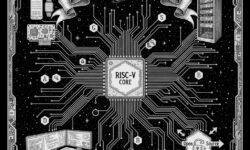
Why this matters now
The internet is quietly preparing for a once‑in‑a‑generation security upgrade. Post‑quantum cryptography (PQC) is moving from research papers into browsers, operating systems, chipsets, and cloud services. The goal is simple to say and hard to do: keep your data safe even when powerful quantum computers arrive.
That goal matters today, not someday. Adversaries can record encrypted traffic now and try to decrypt it later when stronger tools exist. This is often called the store‑now, decrypt‑later problem. If your data needs to stay private for years—medical records, financials, product secrets, or long‑lived government data—you cannot wait for the last minute.
But no one wants a repeat of big‑bang internet changes that break everything. The PQC migration is being designed to roll out cautiously. It uses hybrid cryptography, new standards, careful testing, and a lot of engineering patience. Done right, most people will never notice it happened—except in the peace of mind that their data stays confidential for much longer.
What “post‑quantum” actually means
PQC does not make quantum computers do encryption. It makes classical computers run algorithms believed to be safe even against quantum attacks. It replaces the public‑key algorithms most at risk—RSA and elliptic curves—with alternatives based on hard math problems not known to fall to quantum tricks.
The two jobs of public‑key crypto
- Key establishment (KEMs). Two machines agree on a shared secret for encryption over an untrusted network. In today’s web, this is often done with elliptic‑curve Diffie–Hellman. In PQC, we use key encapsulation mechanisms (KEMs).
- Digital signatures. One party proves they are who they say they are, and signs things like certificates, software, or emails.
Symmetric ciphers like AES are less threatened by quantum speedups. Doubling key sizes addresses the main theoretical speedup (Grover’s algorithm). The heavy lifting is in replacing public‑key pieces without breaking protocols built on them.
Meet the algorithms going mainstream
The U.S. National Institute of Standards and Technology (NIST) ran a multi‑year competition to pick future‑proof algorithms. In 2022 it announced selections. In 2024 it released draft standards with new names that match their mathematical families.
ML‑KEM (based on CRYSTALS‑Kyber)
This is the leading choice to replace key exchanges. It’s efficient, provides strong security levels, and has compact public keys and ciphertexts by PQC standards. It’s lattice‑based, which has good performance on general CPUs. You’ll see it used in hybrid TLS handshakes and experimental protocols today.
ML‑DSA (based on CRYSTALS‑Dilithium)
This is the primary post‑quantum digital signature algorithm. It offers fast verification and moderate signature sizes. Expect it to appear in certificate chains, code signing, and hardware tokens over time.
SLH‑DSA (based on SPHINCS+)
SPHINCS+ is a stateless hash‑based signature scheme. It is conservative and built on hashing. Signatures are larger and signing is slower than lattice options, but it offers a valuable independent design. Many systems will keep SPHINCS+ in their toolbox for high‑assurance use or as a fallback.
Security levels and parameters
NIST organizes algorithms into security levels roughly corresponding to classical strength. Choosing levels is a balance of security, bandwidth, storage, and computation. For most web apps, moderate levels are a good default. Sensitive sectors may select higher parameters until performance and ecosystem maturity make stronger levels convenient.
One more subtle point: side‑channel resistance matters. Lattice algorithms must be implemented carefully to avoid leaking secrets through timing or memory patterns. That is why you will see hardened libraries, constant‑time code, and audited implementations emphasized as much as raw algorithm names.
How the internet upgrades in place
We do not need to rip out existing cryptography. The practical way forward is hybrid cryptography. Systems use both classical and post‑quantum algorithms at the same time during a transition window. If one breaks in the future, the other still protects you today.
Hybrid TLS and QUIC
Web traffic relies on TLS (and on QUIC for many modern connections). Engineers are adding new cipher suites that perform a classical key exchange (like X25519) and a post‑quantum KEM (like ML‑KEM). The shared key for the session is derived from both. From the user’s perspective, nothing changes. Under the hood, the handshake packets get a bit bigger and there’s a modest CPU overhead. Browser teams and CDNs have tested this at real scale, showing it’s viable even for large sites.
Hybrid TLS is not just a stopgap. It lets us deploy and debug PQC now without dropping support for older devices or risking outages. Over time, as client support broadens, systems can shift to PQC‑only where appropriate.
Certificates and X.509
Certificates bind domain names to public keys. Moving to PQC means issuing certificates signed with PQC algorithms and possibly including PQC public keys for servers. Certificate chains will get larger, which means careful tuning so packets don’t overflow typical network MTUs. Certificate authorities will support mixed chains for a while—classical roots with PQC intermediates, or vice versa—so older clients keep working.
Email signatures (S/MIME) and document signatures (CMS) also rely on X.509. Standards bodies are aligning formats to include PQC keys alongside classical ones. Many organizations will run dual identities during the transition.
SSH, VPNs, and private protocols
Protocols like SSH and WireGuard can incorporate PQC KEMs into their handshakes. Private APIs often use mTLS (mutual TLS), so the same hybrid approach works there. VPNs may adopt PQC by upgrading their key exchange and refreshing internal PKI with PQ signatures.
Code signing and software updates
Operating systems and app stores require signatures to trust updates. That means Apple, Google, Microsoft, Linux distros, and package registries will all move their signing infrastructure to PQC. Expect long overlap periods where software accepts both old and new signatures. For developers, the main change is tooling: new libraries, new build flags, and sometimes new hardware tokens.
Crypto agility beyond buzzwords
Crypto agility means you can change algorithms without reconstructing your product. It is not a single feature; it is a set of habits and design decisions.
Design for pluggable crypto
- Abstract your crypto calls. Do not scatter algorithm choices throughout the codebase. Wrap them in a small set of functions or use a provider model.
- Store metadata with keys. Record algorithm, parameters, and versions alongside key material so migrations are traceable and automatable.
- Version your protocol messages. Protocol versioning lets you introduce PQC without breaking old clients. Include negotiation for supported algorithms.
- Prefer standard containers. JOSE/COSE, CMS, and TLS all have agreed ways to carry new algorithms. Avoid inventing your own formats when possible.
Inventory and risk mapping
You can’t upgrade what you don’t know you have. Build a cryptography inventory: TLS endpoints, internal services, embedded devices, certificates, SSH keys, code signing keys, HSMs, and archives. Map data types to confidentiality lifetimes. That tells you where “store‑now, decrypt‑later” hurts most and where to start.
Hardware: HSMs, tokens, and tiny devices
Cryptography does not live in software alone. PQC affects how keys are generated, stored, and used in hardware.
Hardware security modules (HSMs)
HSMs protect root keys and sign high‑value material like certificates or software updates. New firmware and sometimes new silicon are needed to support PQC algorithms efficiently and safely. Side‑channel‑resistant implementations for lattice operations, larger key buffers, and new random number routines all factor in. Expect staged releases: experimental support first, then certified builds as standards finalize.
Smartcards and authenticators
Enterprise badges, developer tokens, and consumer authenticators face tight memory and CPU constraints. PQ signatures are larger than ECDSA, which affects storage and transport. FIDO2/WebAuthn ecosystems are exploring PQC for attestation and credentials. Early support may use hybrid attestation (classical plus PQ) while the UX remains unchanged for users logging in with passkeys.
IoT and embedded systems
Sensors, meters, and controllers often run on microcontrollers with kilobytes of RAM and slow connectivity. PQC is feasible, but you must plan around:
- Firmware size. Larger libraries and signatures increase update packages. Use delta updates and compression.
- Battery life. KEMs and signatures add CPU cycles. Batch operations when devices are plugged in or during maintenance windows.
- Bootloaders. Secure boot chains need PQ signatures to ensure long‑term integrity. Consider multiple signature slots to support hybrids.
Engineering the migration
Upgrading cryptography is half math and half logistics. The logistics often win.
A phased plan that actually works
- Discover and prioritize. Build the inventory. Tag systems by data sensitivity and exposure.
- Stand up a PQC testbed. Use libraries that support ML‑KEM and ML‑DSA and a staging environment that replicates production latency, MTU, and client diversity.
- Run hybrid in the lab. Validate handshakes, certificate chains, and fallback logic. Measure CPU, memory, and latency.
- Pilot with real traffic. Prefer endpoints you control end‑to‑end. Observe failure rates and user metrics.
- Expand with guardrails. Apply configuration management and feature flags. Keep a quick rollback path.
- Rotate keys and renew certificates. Establish regular PQC key rotation and ensure backup/restore workflows include PQC metadata.
- Audit and document. Record algorithm choices, parameter sets, and exceptions. Share results with suppliers and partners.
Observability and “gotchas”
- Packet sizes and fragmentation. Larger certificates can push TLS handshakes over MTU limits, causing fragmentation or drops. For QUIC, larger ClientHello messages can increase initial datagrams. Tune certificate chains and enable GREASE‑style experimentation to find weak middleboxes.
- Old proxies and DPI boxes. Some middleboxes misunderstand new cipher suite names or larger extensions. Test through every hop.
- Handshake retries. Hybrids may trigger additional retries under packet loss. Ensure servers handle spikes gracefully.
- Library version mismatch. Keep clients, servers, and load balancers on compatible PQC‑capable libraries. Document minimum versions.
Beyond the web: data at rest and long‑lived secrets
“Store‑now, decrypt‑later” affects archives as much as live traffic. Plan for data that outlives today’s keys.
Envelope encryption and key wrapping
Most systems use a data encryption key (DEK) to protect files and a key encryption key (KEK) to protect the DEK. Swapping the KEK to a PQC KEM is often easier than re‑encrypting all data. It becomes your bridge: as quantum risk grows, you re‑wrap DEKs with PQC while leaving DEKs and data intact.
Backups, email, and records
Backups may last for years. If you back them up with RSA‑wrapped keys, plan a re‑wrap process. Similarly, signed emails (S/MIME) and documents need PQC signatures for long‑term non‑repudiation. Archives should include algorithm metadata and verification instructions so future systems can validate signatures without guesswork.
Costs: what leaders should expect
PQC migration has real costs, but they are manageable with planning.
Budget categories
- Engineering time. Library upgrades, testbeds, and protocol tweaks.
- Hardware refresh. HSMs, tokens, and embedded controllers that lack PQC support.
- Bandwidth and CPU. Modest increases per handshake or signature verification.
- Training and audits. Teaching teams, updating threat models, and certifying implementations.
Questions for vendors
- Which PQC algorithms and parameter sets do you support today, and which are on your roadmap?
- Do you offer hybrid TLS and PQ signatures? Which versions of your software include them?
- How do you handle side‑channel protections and constant‑time implementations?
- What’s your plan for certificate sizes, chain management, and MTU issues?
- Can we trial PQC features in staging or limited rollout, and how do we collect telemetry?
- When do you expect compliance certifications for PQC (e.g., FIPS validations) to be available?
What about blockchains?
Blockchains rely heavily on digital signatures. Many use ECDSA or EdDSA. If a quantum attack can forge those signatures, funds and identities could be at risk. Upgrading is harder than on the web because addresses and consensus rules are tied to signature systems.
Paths being explored
- New signature types. Chains can add PQC signature verification as an allowed script or opcode, enabling users to migrate their keys.
- Hybrid outputs. Funds or identities controlled by both classical and PQC keys reduce risk during transition.
- Timelocks and migration windows. Protocol rules can encourage or require key upgrades over time.
- Layer‑2 and custodial shields. Some systems may rely on layer‑2s or custodians that adopt PQC earlier, giving users a safe harbor.
Because blockchains are decentralized, migrations require coordination. The takeaway for builders and treasuries is straightforward: inventory keys, plan rotations, and test PQC‑enabled wallets and nodes in controlled environments. Even if your chain is not ready to switch on PQC, your organization should be ready to move when it is.
Common myths, answered
“We’ll switch when quantum computers arrive.”
By then, recorded data may be decryptable. PQC deployment is not a flip you switch overnight. It touches certificates, software updates, hardware, and partners. Start now, at a pace that fits your risk profile.
“AES is broken by quantum.”
No. Symmetric encryption is comparatively robust. Doubling the key size addresses known quantum speedups. The urgent changes are in public‑key crypto.
“PQC is too slow.”
Some algorithms are heavier, but leading choices are efficient. Real‑world tests show hybrid handshakes running at internet scale. For many applications, extra milliseconds are invisible to users.
“We must wait for every standard to finalize.”
Core selections are stable, and hybrid deployments are explicitly designed for safe early adoption. You can test, pilot, and phase in PQC while standards polish details.
Practical tooling to get started
The gap between reading about PQC and running it in staging is smaller than you think.
Libraries and stacks
- Open source PQC toolkits. Projects provide reference implementations of ML‑KEM, ML‑DSA, and SLH‑DSA, often with bindings for common languages.
- TLS libraries. Several stacks support hybrid ciphersuites that combine classical ECDH with ML‑KEM. You can negotiate these in controlled environments.
- OS packages. Linux distros and BSDs are beginning to ship PQC‑enabled libraries, sometimes behind feature flags.
Test strategies
- Shadow traffic. Mirror a fraction of production handshakes into a PQC‑enabled staging cluster to measure performance without affecting users.
- Certificate size drills. Inflate certificate chains to expected PQ sizes, then run canary tests to check for MTU, handshake, or proxy issues.
- Fuzzing and differential tests. Compare classical and PQC implementations under heavy load. Look for timing leaks and error handling quirks.
Standards and guidance to watch
Standards bodies and agencies are offering clear guidance. The themes are consistent: adopt hybrid now, plan for full PQ soon, and inventory everything.
- NIST PQC project. Coordinates algorithm selection and standardization.
- IETF. Defines how PQC fits into TLS, QUIC, X.509, JOSE/COSE, and more.
- National guidance. Policies for critical systems, such as modernization timelines and preferred algorithms.
If your organization must meet compliance standards, track when PQC modules complete validations. Build those timelines into your procurement and deployment plans.
A 12‑month playbook you can adapt
Quarter 1: Discover and plan
- Inventory every place you use public‑key crypto: TLS endpoints, internal RPC, SSH, VPNs, code signing, PKI, HSMs, tokens, and archives.
- Classify data by confidentiality lifetime. Mark anything that must stay secret for five years or more as priority.
- Select libraries and a testbed. Stand up a small PQC lab with representative clients and servers.
Quarter 2: Prototype and test
- Enable hybrid TLS on a non‑critical domain. Measure handshake success rates and latency.
- Issue a PQC test certificate chain. Validate parsing and path building across your fleet.
- Prototype PQ signatures for internal code signing. Ensure build pipelines and verifiers accept them.
Quarter 3: Pilot and train
- Run a pilot on a customer‑facing service with feature flags and rollback.
- Start a key rotation program that includes PQC metadata and backup procedures.
- Train SREs, developers, and security teams on troubleshooting PQ handshake issues.
Quarter 4: Expand and document
- Extend hybrid TLS across major services. Add PQC to VPNs and internal APIs with staged rollouts.
- Refresh HSM firmware or plan upgrades to models supporting PQC. Test throughput and latency.
- Document your cryptography posture: where PQC is enabled, plans for full migration, and vendor dependencies.
How this upgrade avoids breaking everything
The internet has learned from past migrations. We won’t flip a switch. Instead, we will:
- Negotiate, don’t dictate. Protocols agree on algorithms based on client and server capability.
- Layer changes. Start with key exchanges (KEMs), then extend to signatures in certificates and code signing, then to specialized systems like DNSSEC and IoT bootloaders.
- Keep fallbacks, then retire them. Hybrids ensure safety now and later. When adoption is broad enough, classical fallbacks can be disabled where risk warrants.
- Measure everything. Telemetry and canaries catch surprises before users do.
If all goes well, most people never notice. Their browsers connect, their apps update, their devices boot. Under the surface, the math is sturdier against future attacks.
The human side: skills and mindset
For teams implementing PQC, the hardest part is not learning a new acronym. It is adopting a mindset that treats cryptography as a living dependency. That means:
- Owning the inventory. Someone must be responsible for knowing what algorithms are used where.
- Embracing boring change management. Feature flags, rollbacks, and playbooks beat heroics.
- Partnering with vendors. Your providers’ timelines becomes your timelines. Keep them honest with pilot projects and clear requirements.
- Staying humble about certainty. PQC is designed against known attacks, not proven unbreakable. Keep crypto agility intact for future shifts.
Where we are headed
In a few years, terms like ML‑KEM and ML‑DSA will feel routine—buried in release notes the way RSA key sizes once were. As PQC spreads from browsers to backups, from tokens to blockchains, the web’s basic promise—private, authenticated, updatable—will hold longer into the future.
We do not need perfect forecasts about when powerful quantum computers will arrive. What we need is steady, verifiable progress. That is exactly what hybrid deployments, standardization, and real‑world pilots deliver. Start small, keep going, and document each step. The internet will keep working. Your data will keep its secrets.
Summary:
- Post‑quantum cryptography replaces vulnerable public‑key algorithms with quantum‑resistant ones while keeping systems usable.
- NIST‑selected algorithms include ML‑KEM for key establishment, ML‑DSA for signatures, and SLH‑DSA as a conservative option.
- Hybrid TLS and mixed certificate chains enable safe, staged deployments that users barely notice.
- Crypto agility is about design habits: abstraction, metadata, versioning, and standard formats.
- Hardware—HSMs, tokens, IoT—must be upgraded for PQC performance and side‑channel safety.
- Plan the migration: inventory, testbeds, pilots, telemetry, and staged rollouts with rollback paths.
- Data at rest benefits from re‑wrapping keys with PQC rather than re‑encrypting all content.
- Costs are manageable and predictable: engineering, hardware refresh, bandwidth/CPU, and training.
- Blockchains face unique challenges but can adopt PQC via new signature types, hybrids, and migration windows.
- Start now to counter store‑now, decrypt‑later threats; the internet can upgrade without breaking.





